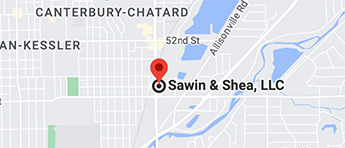Student loan default can impact millions of Americans. Unfortunately, defaulting on a student loan can hurt your finances, credit, and other aspects of your life.
If you fall behind on student loan payments, your loan won’t default immediately. Instead, you’ll default if you fail to make full payment for 270 days, just under nine months.
Once this happens, you may face serious ramifications, including wage garnishment and the offset of your federal tax refund and Social Security benefits. Additionally, this will hurt your credit report. If the lender sells the loan to a collection agency after you default, you’ll also face additional fees and higher interest rates.
Fortunately, you’re not out of options after defaulting. After failing to make sufficient payments for 270 days, you have the option to settle, rehabilitate, or consolidate your student loan. In this blog, you’ll learn about these important options for getting your loan back in good standing.
What Are My Options After Defaulting on Student Loans?
The majority of those with a student loan default will either rehabilitate or consolidate their loans. Student loan settlement is also an option, but this means that you’ll pay your outstanding debts in a lump sum. Often, people negotiate to pay only a percentage of the money they owe, but the majority of defaulted borrowers don’t settle because the lump sum will likely be costly.
Instead, rehabilitation and consolidation offer borrowers an easier option for overcoming their defaults. Both of these options have distinct pros and cons, so you need to know the differences when deciding which is best for your unique financial situation.
How Do Student Loan Consolidation and Rehabilitation Differ?
Student loan consolidation refers to when you consolidate all of your existing student loans into a single new loan. You can consolidate most types of federal student loans, and your new single loan will be in good standing as long as you make on-time payments.
With student loan rehabilitation, you complete a repayment plan to rehabilitate the loan. Your payment plan is based on your discretionary income rather than the amount that you owe, and you’ll make nine payments over the course of nine or ten months. Once you complete the repayment plan, your loan will return to good standing.
Once you go through the student loan consolidation or rehabilitation process, you’ll gain access to valuable loan repayment benefits, such as deference or forbearance of the loan payment and repayment plans based on your income.
What Are the Benefits of Student Loan Consolidation?
One great part of student loan consolidation is that it’s incredibly easy to apply for and consolidate your federal student loans. Unlike student loan rehabilitation, there are no negotiations in determining one’s repayment plan, meaning that it’s an almost instant process, but once you submit your application, it could take up to 30 days to consolidate your loans.
Another distinct benefit is that the process is simpler than student loan rehabilitation because you consolidate all of your eligible federal loans. If you have multiple federal loans and choose to undergo rehabilitation, you’ll need to rehabilitate each individual federal loan. With consolidation, you wrap all of your loans into a single new one, making things far less complicated.
The consolidation process is also much faster than rehabilitation. Student loan rehabilitation takes ten months to complete while consolidation takes between six to eight weeks.
Like with student loan rehabilitation, student loan consolidation can prevent your wages from being garnished, and it can avert the offset of your tax refund and Social Security benefits. It also allows you to pick a new loan servicer if you’re not satisfied with your current lender.
What Are the Disadvantages of Student Loan Consolidation?
Although there are many benefits to student loan consolidation, you need to be aware of important drawbacks.
You cannot consolidate your loans if your wages are already being garnished, and if it appears your wages will be garnished within the next month, consolidation is likely not for you. It takes up to 30 days for your loans to be consolidated after submitting your application, and if your wages are garnished during that time, you’ll no longer be eligible.
Another disadvantage of consolidating is that your default will remain on your credit report for seven years.
Consolidation will also increase your total loan amount because your new loan will include the accrued interest and collection fees.
What Are the Benefits of Student Loan Rehabilitation?
One great advantage of student loan rehabilitation is that you can halt your wage garnishment after it’s already started. You’ll also be able to remove most collection fees once you complete the rehabilitation process.
Student loan rehabilitation is also a great option for those needing to remove the defaulted loan status from their credit reports. Unlike with student loan consolidation, your defaulted loan will be removed from the credit report. Unfortunately, late payments will remain on your report.
What Are the Disadvantages of Student Loan Rehabilitation?
Student loan rehabilitation offers defaulted borrowers great benefits, but there are certainly some disadvantages that you need to be aware of. As mentioned above, the process takes at least nine months, a much longer period than student loan consolidation, and the rehabilitation process will only return one of your loans to good standing. If you’ve defaulted on multiple loans, you’ll need to rehabilitate them separately.
Additionally, you’ll need to communicate with the collection agencies who are in possession of your loans, and you cannot redirect your loans to a new lender.
Finally, it’s important to note that the payments you make during your repayment plan often don’t lower the balance of your loan. These payments go toward collection fees and interest.
Contact Indianapolis Student Loan Lawyers
If you require assistance in determining your best course of action in overcoming student debts, contact the Indianapolis student loan rehabilitation attorneys at Sawin & Shea, LLC.
We offer FREE consultations to help you get started on your journey to becoming debt free. Call us today at 317-759-1483, or click here to contact us online.



